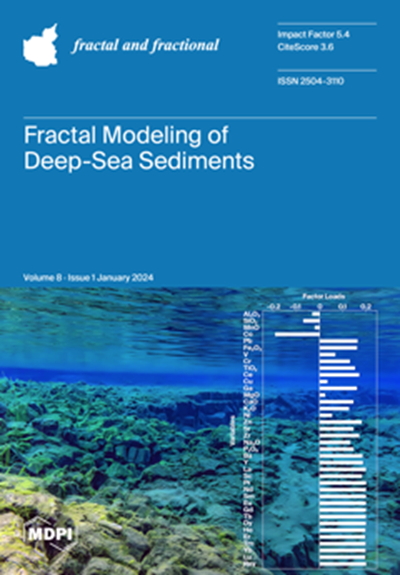Finite Difference Modeling of Time Fractal Impact on Unsteady Magneto-hydrodynamic Darcy–Forchheimer Flow in Non-Newtonian Nanofluids with the q-Derivative
IF 3.3
2区 数学
Q1 MATHEMATICS, INTERDISCIPLINARY APPLICATIONS
引用次数: 0
Abstract
This contribution addresses a fractal numerical scheme that can be employed for handling fractal time-dependent parabolic equations. The numerical scheme presented in this contribution can be used to discretize integer order and fractal derivatives in a given differential equation. Therefore, the scheme and results can be used for both cases. The proposed finite difference scheme is based on two stages. Fractal time derivatives are discretized by employing the proposed approach. For the scalar convection–diffusion equation, we derive the stability condition of the proposed fractal scheme. Using a nonlinear chemical reaction, the approach is also used to solve the Quantum Calculus model of a Williamson nanofluid’s unsteady Darcy–Forchheimer flow over flat and oscillatory sheets. The findings indicate a negative correlation between the velocity profile and the porosity parameter and inertia coefficient, with an increase in these factors resulting in a drop in the velocity profile. Additionally, the fractal scheme under consideration is being compared to the fractal Crank–Nicolson method, revealing that the proposed scheme exhibits a superior convergence speed compared to the fractal Crank–Nicolson method. Several problems involving the motion of non-Newtonian nanofluids through magnetic fields and porous media can be investigated with the help of the proposed numerical scheme. This research has implications for developing more efficient heat transfer and energy conversion devices based on nanofluids.用 q 衍生法建立时间分形对非牛顿纳米流体中的非稳态磁流体动力学达西-福克海默流动影响的有限差分模型
这篇论文探讨了一种可用于处理分形时变抛物方程的分形数值方案。本论文中介绍的数值方案可用于给定微分方程中整阶导数和分形导数的离散化。因此,该方案和结果可同时用于这两种情况。所提出的有限差分方案基于两个阶段。分形时间导数采用所提出的方法进行离散化。对于标量对流扩散方程,我们推导出了拟议分形方案的稳定性条件。利用非线性化学反应,该方法还用于求解威廉姆森纳米流体在平面和振荡片上的非稳态达西-福克海默流动的量子计算模型。研究结果表明,速度曲线与孔隙度参数和惯性系数之间存在负相关关系,这些因素的增加会导致速度曲线的下降。此外,还将所考虑的分形方案与分形 Crank-Nicolson 方法进行了比较,结果表明,与分形 Crank-Nicolson 方法相比,所提出的方案具有更高的收敛速度。在提出的数值方案的帮助下,可以研究涉及非牛顿纳米流体通过磁场和多孔介质运动的若干问题。这项研究对开发基于纳米流体的更高效传热和能量转换设备具有重要意义。
本文章由计算机程序翻译,如有差异,请以英文原文为准。
求助全文
约1分钟内获得全文
求助全文
来源期刊

Fractal and Fractional
MATHEMATICS, INTERDISCIPLINARY APPLICATIONS-
CiteScore
4.60
自引率
18.50%
发文量
632
审稿时长
11 weeks
期刊介绍:
Fractal and Fractional is an international, scientific, peer-reviewed, open access journal that focuses on the study of fractals and fractional calculus, as well as their applications across various fields of science and engineering. It is published monthly online by MDPI and offers a cutting-edge platform for research papers, reviews, and short notes in this specialized area. The journal, identified by ISSN 2504-3110, encourages scientists to submit their experimental and theoretical findings in great detail, with no limits on the length of manuscripts to ensure reproducibility. A key objective is to facilitate the publication of detailed research, including experimental procedures and calculations. "Fractal and Fractional" also stands out for its unique offerings: it warmly welcomes manuscripts related to research proposals and innovative ideas, and allows for the deposition of electronic files containing detailed calculations and experimental protocols as supplementary material.
 求助内容:
求助内容: 应助结果提醒方式:
应助结果提醒方式:


